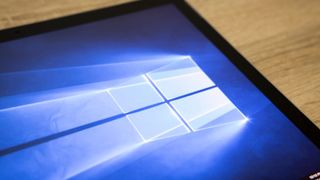Windows 10 gets a new feature to save laptop battery life
Apple has the lead here, and Microsoft needs to catch up

When it comes to battery efficiency, Microsoft Windows when compared to Apple's efficient MacOS operating system. And with Apple's move to M1-powered machines, that gulf is only widening. While Microsoft is going to be stuck on x86 processors for a while, it seems there are some optimizations that the company is working on to eek more battery life out of Windows-based laptops.
According to TechRadar, a brand new Eco mode is currently being tested that will try to curtail power-hungry applications and therefore get the maximum life out of your battery. The new mode is accessed through the task manager currently. Some test users on preview build 21364 will see a menu option on their right mouse click that allows you to put a power-hungry app into a restricted mode.
- Check out 2021's best laptops
- On a budget? These are the best laptops under $500
- Plus: Latest Windows 10 update can be disastrous for gamers — here’s why
This feature works in two ways, firstly by setting the priority of an application to ‘low’ and applying EcoQoS. As the name suggests, this is a ‘Quality of Service’ level which can manage applications that don’t need low latency or high performance. That means it won’t work if you’re editing a video, or playing a game, but could be a great option for more general Windows users.
While users are able to manage this manually, there are also developer APIs which can be called to set processes to this low power mode. Essentially, an app can dial its power consumption right back under certain circumstances. That might mean that your web browser will engage the mode when minimized.
In its own blog post, Microsoft points out this is “ideal for background services, updaters, sync engines, indexing services, and more, where energy efficiency is the focus.” It will bring advantages like reduced heat and fan noise as well as reduced thermal throttling.
Microsoft says that in the right circumstances it can create a 90% reduction in power consumption and can perform the same tasks using less than half of the CPU energy. With Intel and AMD processors continually improving in power management as well, there could be big gains achieved with this new functionality.
Support for the mode is currently limited by hardware. You’ll need an Intel 10th or 11th generation mobile CPU or a Ryzen 5000 mobile processor. There’s also support for Qualcomm processors too, for ARM-based Windows machines. Microsoft also says it will eventually extend this system to desktop PCs where power consumption is less critical, but lowering energy consumption is still enormously valuable from a financial and environmental perspective.
Sign up to get the BEST of Tom’s Guide direct to your inbox.
Upgrade your life with a daily dose of the biggest tech news, lifestyle hacks and our curated analysis. Be the first to know about cutting-edge gadgets and the hottest deals.
Ian has been involved in technology journalism since 2007, originally writing about AV hardware back when LCDs and plasma TVs were just gaining popularity. Nearly 15 years on, he remains as excited as ever about how tech can make your life better. Ian is the editor of T3.com but has also regularly contributed to Tom's Guide.
